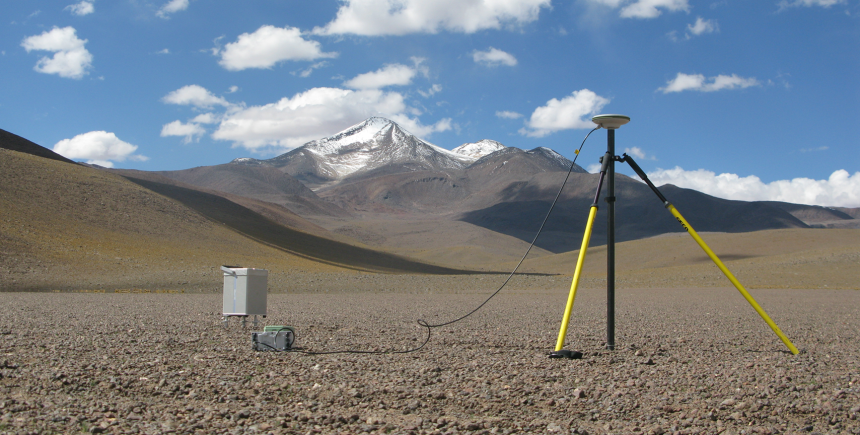Bolivia has a “zombie” volcano on its hands. Despite being technically dead, Uturuncu in the Central Andes continues to simmer with hints of seismic activity and occasionally belches out plumes of gas. In a new study, scientists have taken a deep look at the anatomy of this undead volcano, hoping to get some insights into its mysterious ways.
Uturuncu last erupted 250,000 years ago. There is no strict definition of when a volcano is considered “extinct” or just “dormant,” but a quarter of a million years is a long time, even by volcanic standards. Nevertheless, the volcano is clearly not totally done and dusted, as it still shows clear signs of volcanic unrest every now and again.
Using seismic tomography and rock analysis, researchers at the University of Science and Technology of China, the University of Oxford, and Cornell University were able to gather information about the internal anatomy of Uturuncu’s structure.
Fancy scientific equipment, including a gravimeter and GPS station, with Uturuncu looming in the background
Image credit: Duncan Muir/Cardiff University
This showed how any volcanic liquids and gases were likely to accumulate in reservoirs directly below the volcano’s crater. That underground unrest pushes the ground upward in the middle while the edges sink, creating the volcano’s signature “sombrero” shape. Fortunately, all of this suggests that Uturuncu has a low eruption risk.
Using this “comprehensive approach,” the researchers hope it could be applied to other volcanoes that are seemingly lingering in a zombified state to gauge whether they pose any risk of eruption.
“The methods in this paper could be applied to the more than 1400 potentially active volcanoes and to the dozens of volcanoes like Uturuncu that aren’t considered active but that show signs of life — other potential zombie volcanoes,” Professor Matthew Pritchard, study co-author, said in a statement.
Indeed, there are many other volcanoes on Earth that have gone through unusually long periods of slumber before suddenly waking in a violent rage. Mount St. Helens in Washington state was dormant between 11,000 years ago to about 4,000 years ago, but has regularly kicked up a fuss since.
Yellowstone is another fascinating case. The North American giant had its last major explosive eruption around 631,000 years ago, with the last lava flow occurring about 70,000 years ago. However, its vibrant expression of seismic shake-ups and hydrothermal activity clearly shows it’s not dead yet.
Exactly when it might erupt again, however, remains an unsettling mystery.
The study is published in the journal Proceedings of the National Academy of Sciences.
Source Link: Uturuncu: The "Zombie" Volcano In Bolivia That Refuses To Die
